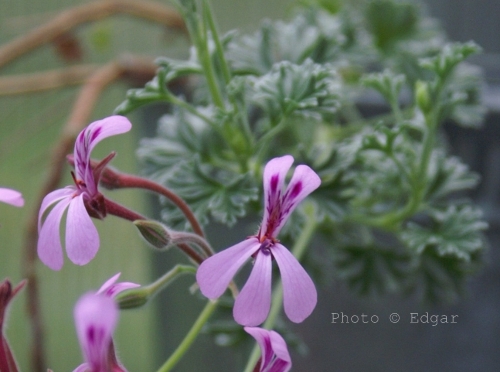Section Reniformia.
Small plant growing in rosette form. The leaves have a nice peppery scent.
White flowers with purple marking on the upper petals.
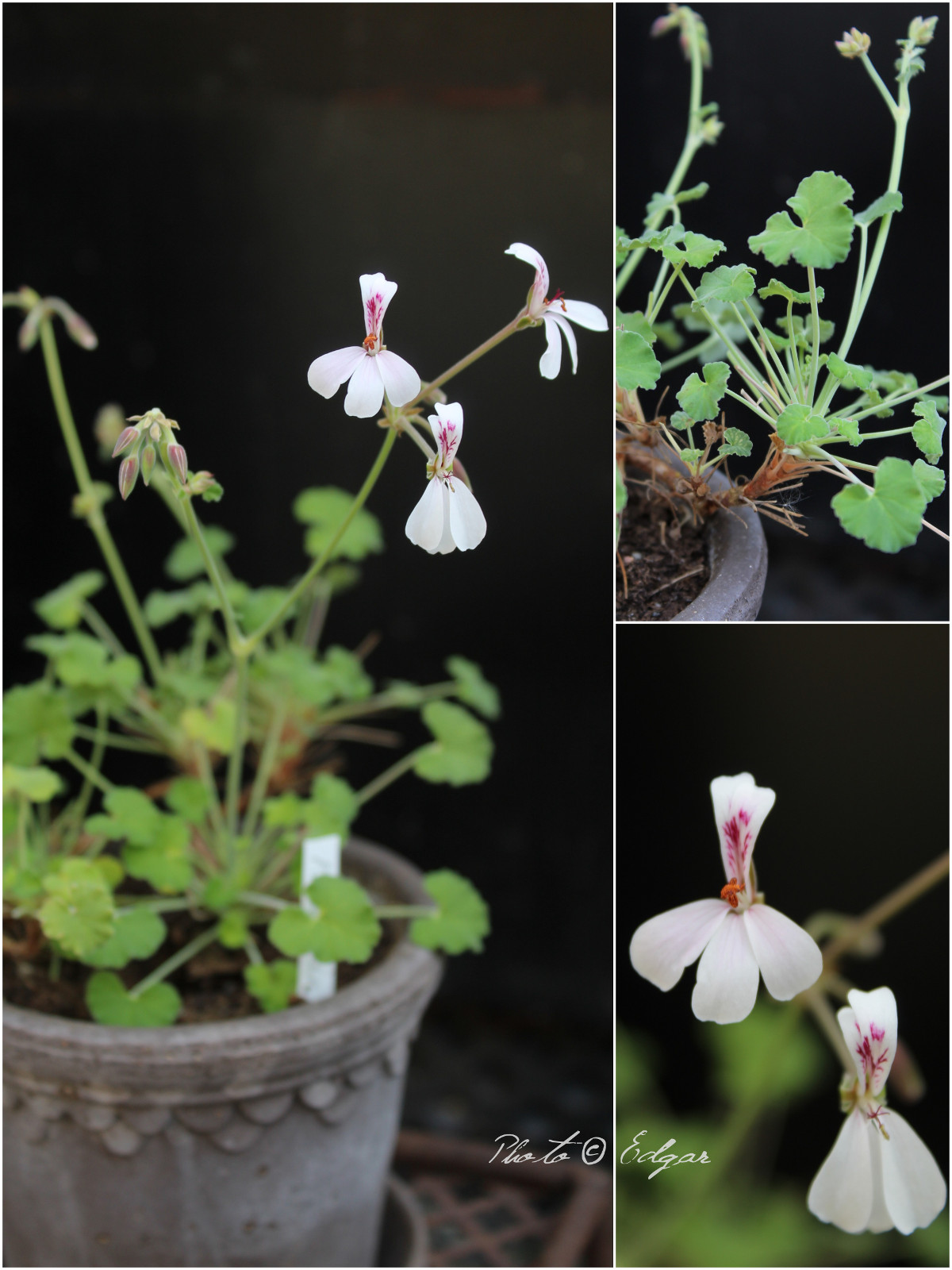

Section Reniformia.
Small plant growing in rosette form. The leaves have a nice peppery scent.
White flowers with purple marking on the upper petals.

Species in the section Campylia.
Flower petals can be pink to nearly white, with darker veins on upper petals.
Leaves more leatherly than P. ovale.
(Grown from seed).
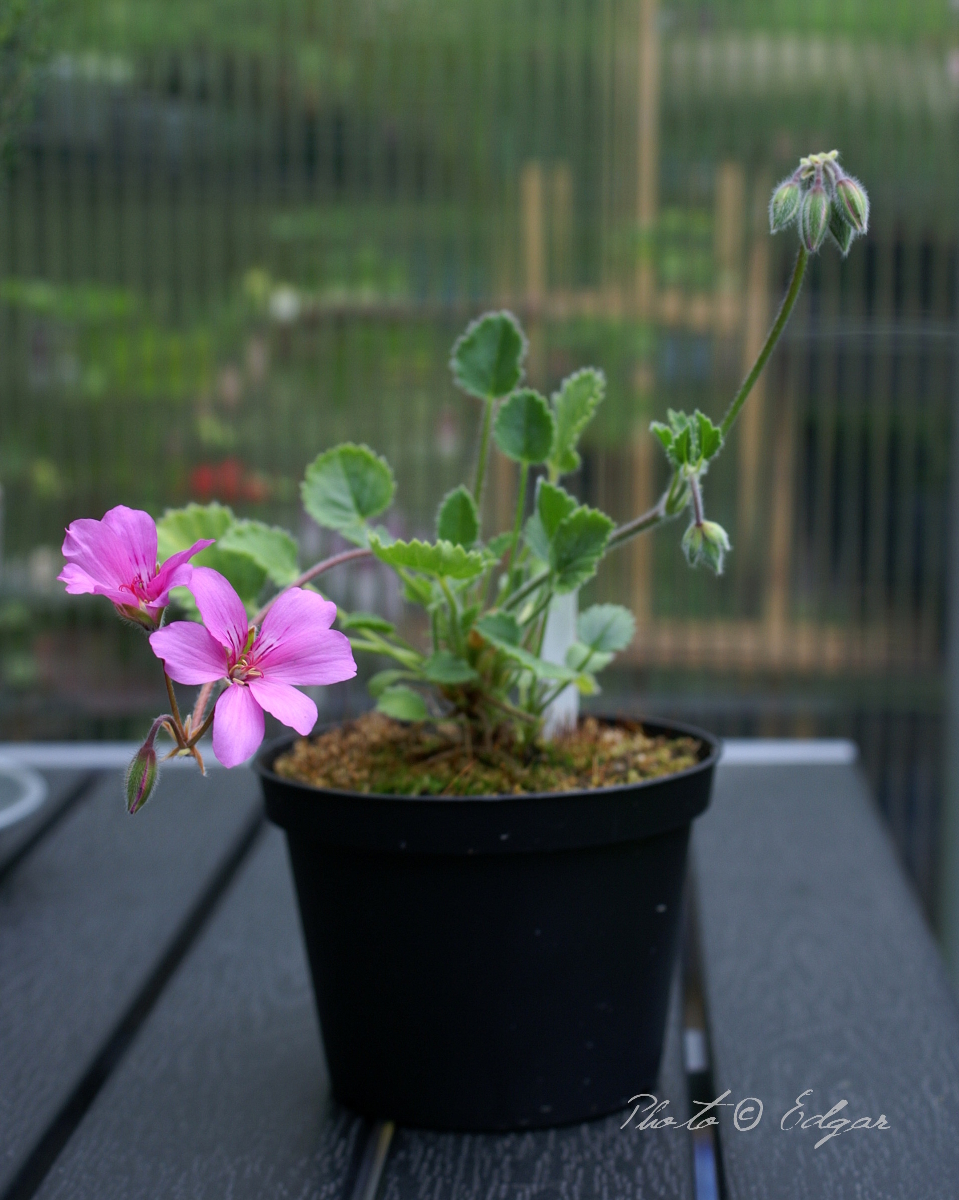
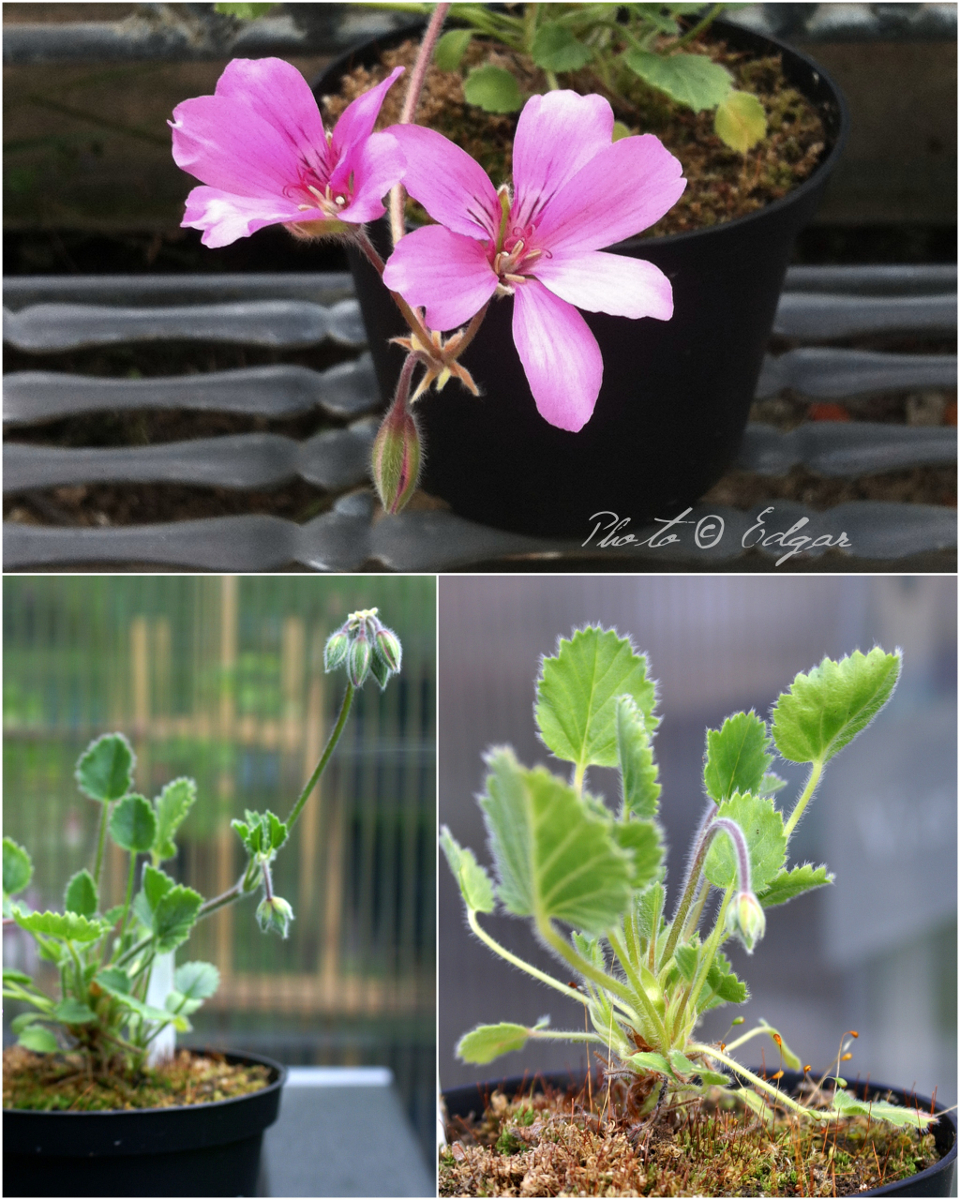
Section Cortusina.
Species / variety of P. crassicaule with brown red-ish stems. Grown from seed.
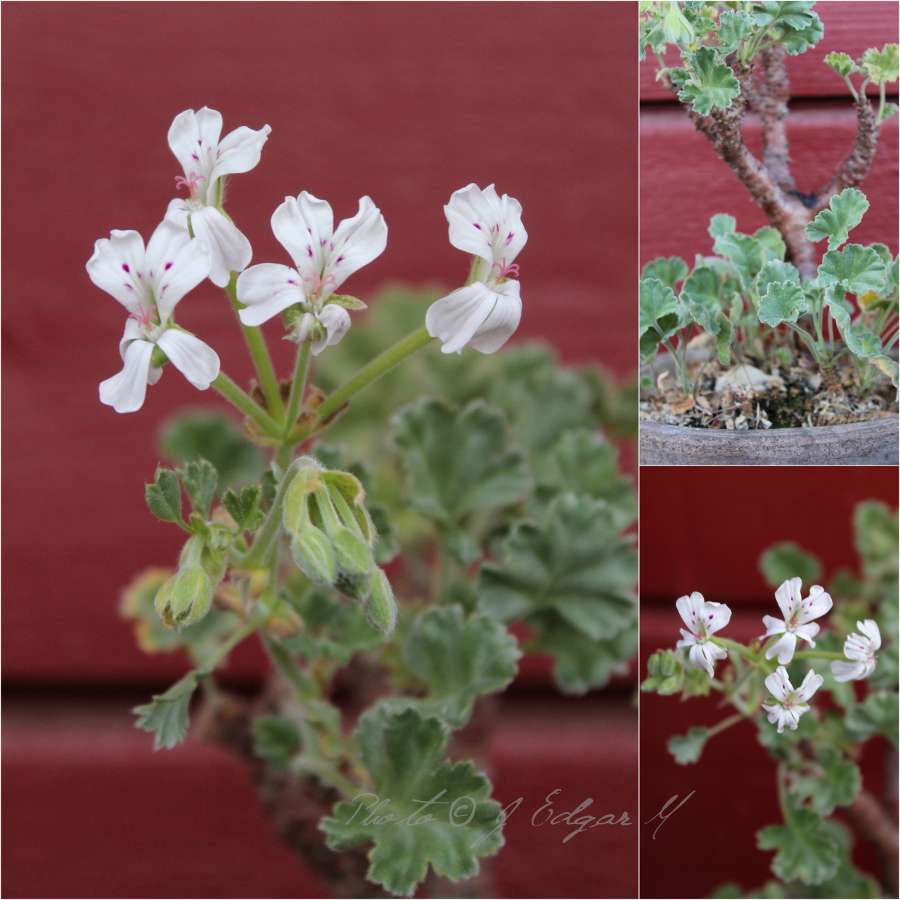
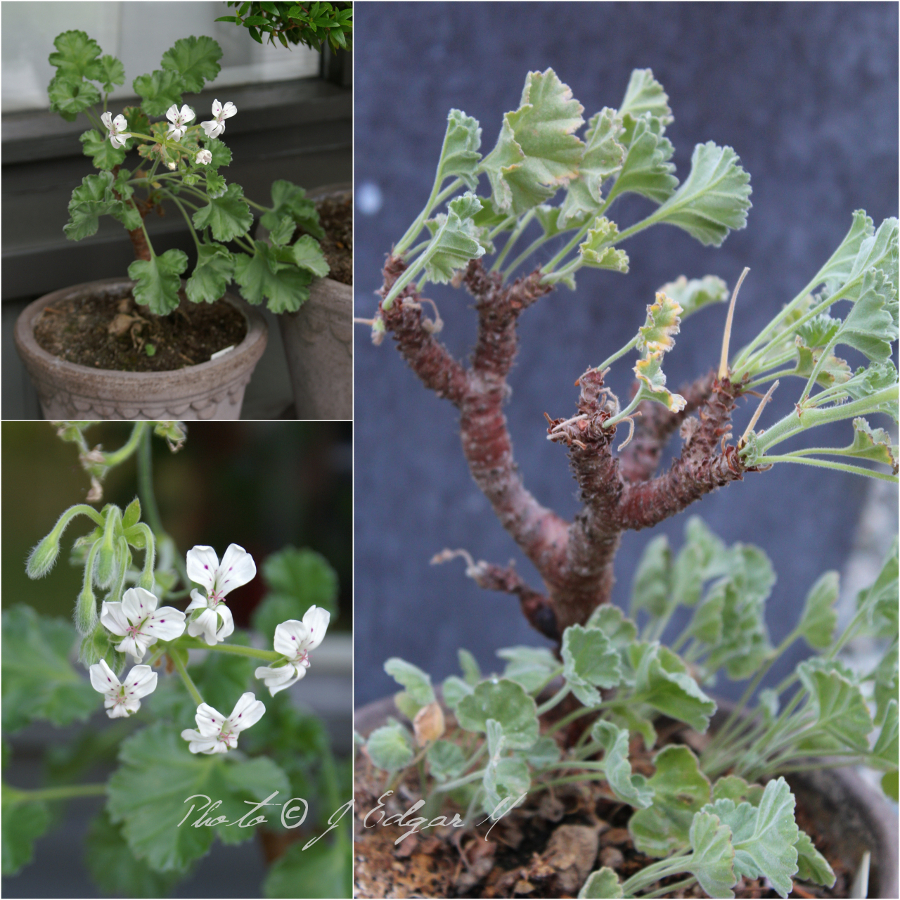
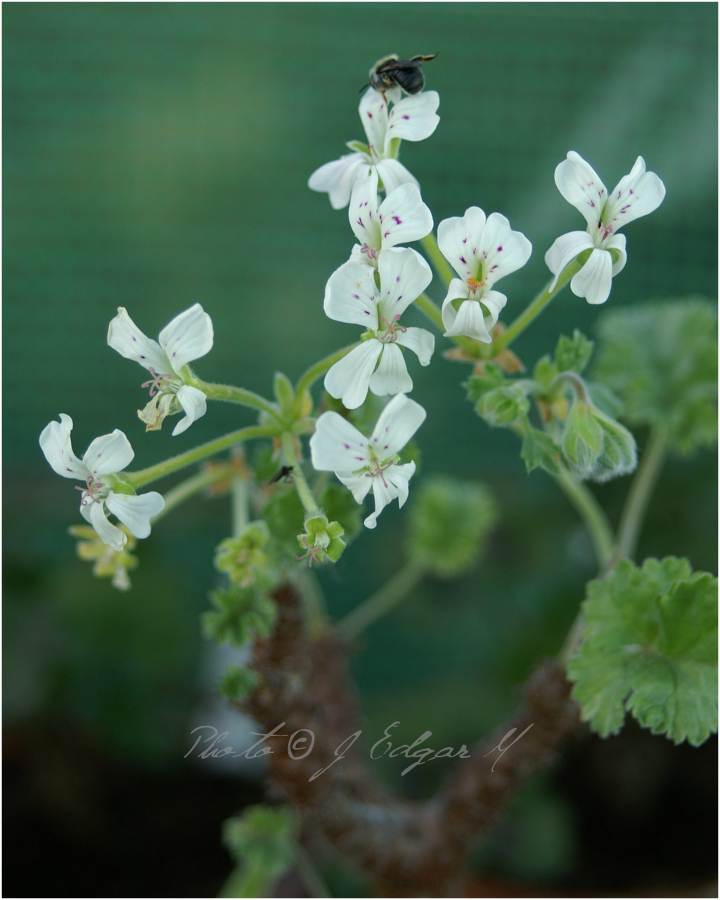
Section Glaucophyllum.
Easily recognized by the upright lanceolate leaves.
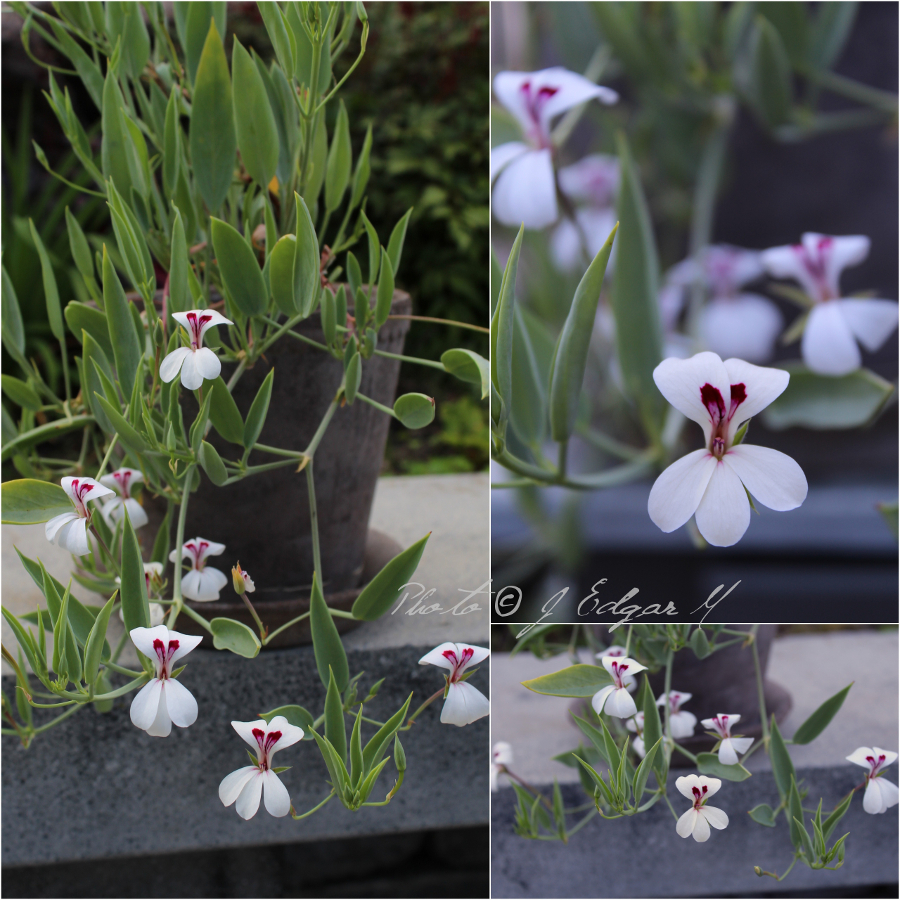
Section Reniformia.
Small plant with woody stems, and sticky scented leaves.
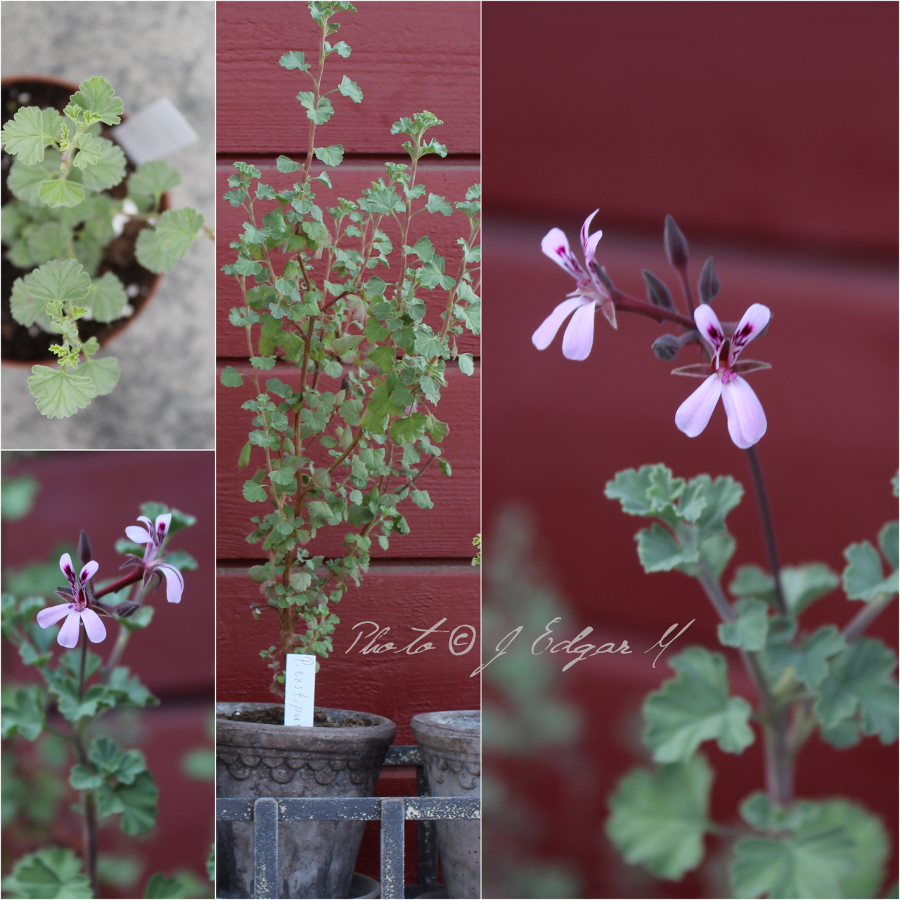
Cultivated form of the species with finely divided leaves. The upper petals of this cultivar are also divided.
The leaves are sticky and have some scent.
P. denticulatum belongs to the section Pelargonium.
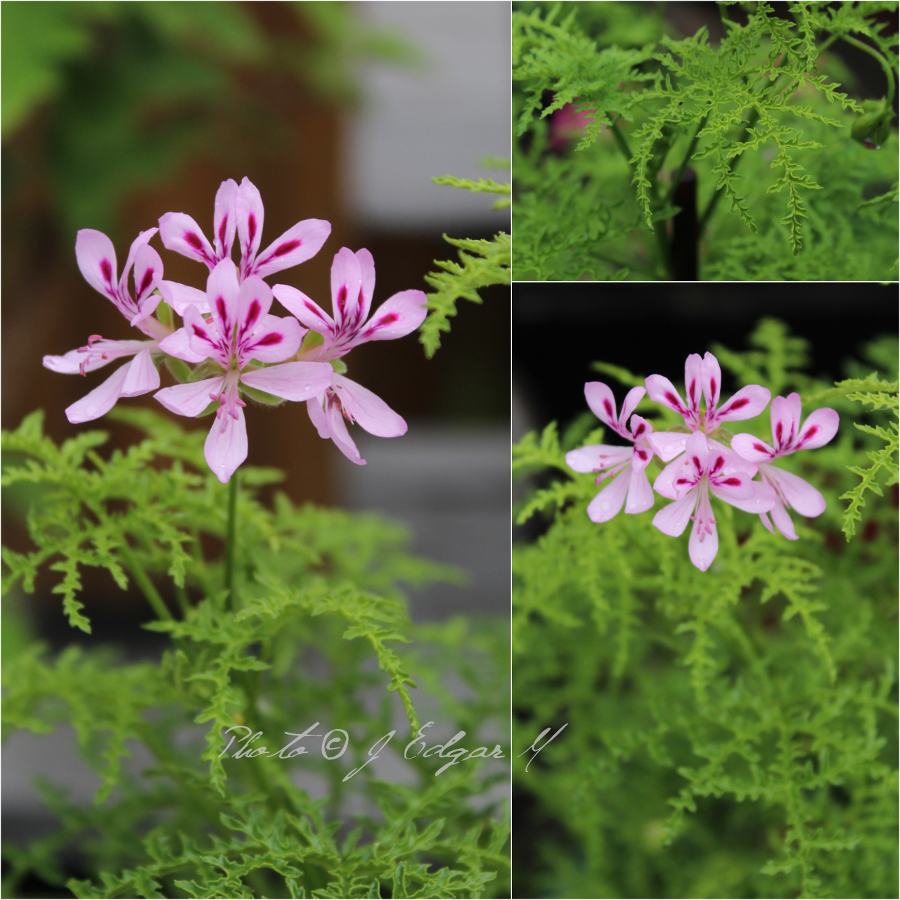
Species in the section Glaucophyllum.
Got this as P. grandiflorum, but this is probably a hybrid and not the true species.
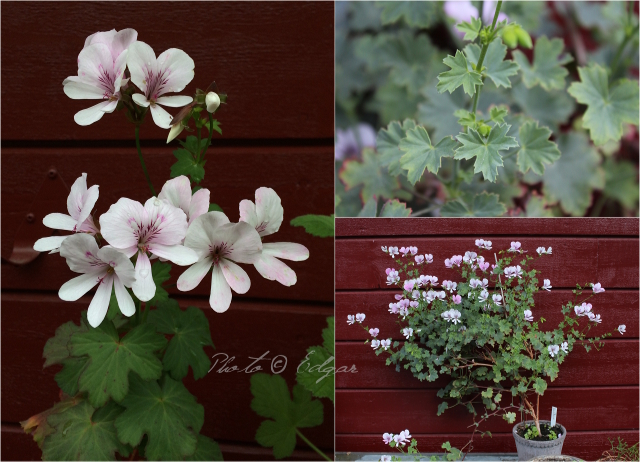
Updated June 2024.
Species in the section Ciconium, previous placed in Jenkinsonia.
Named after Borana in Ethiopia, where it was first found in 1972.
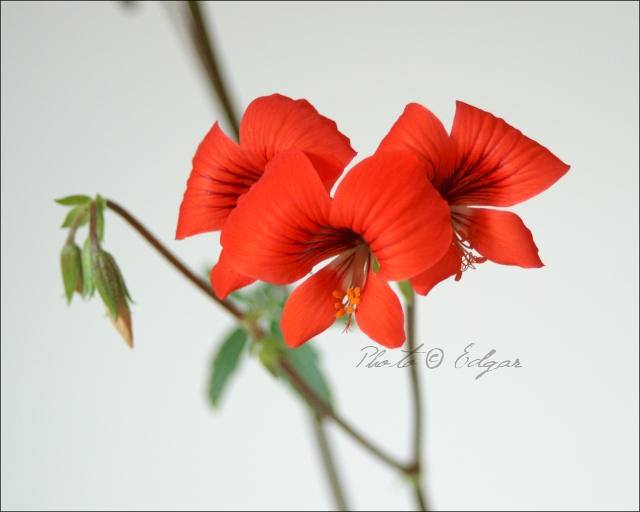
Large orange-red flowers with darker markings.
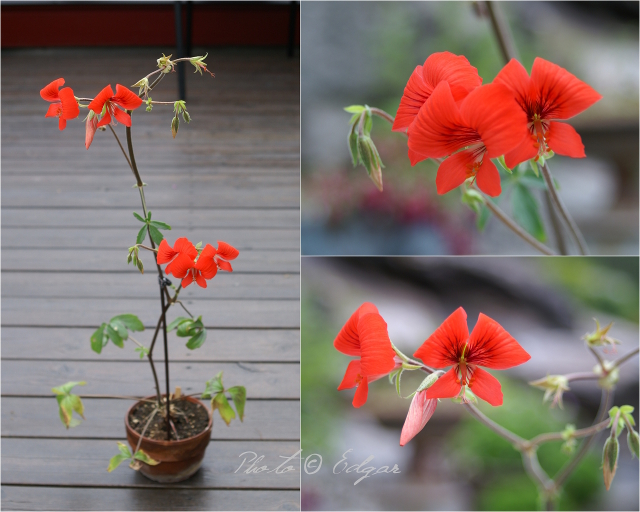
Dormant in winter – needs higher temperatures than the pelargoniums endemic to South Africa.

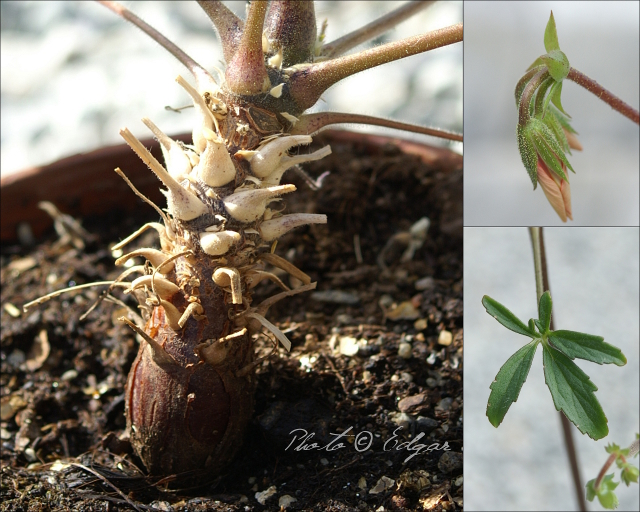
Succulent stem with leaf bases. The leaves get quite thick.
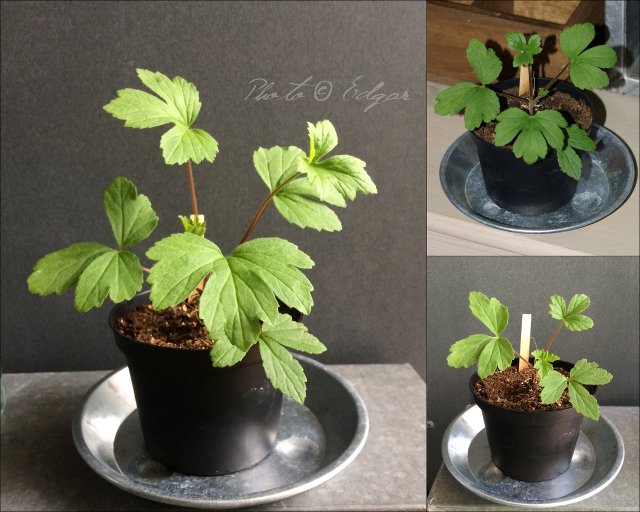
Young plant.
Section Polyactium
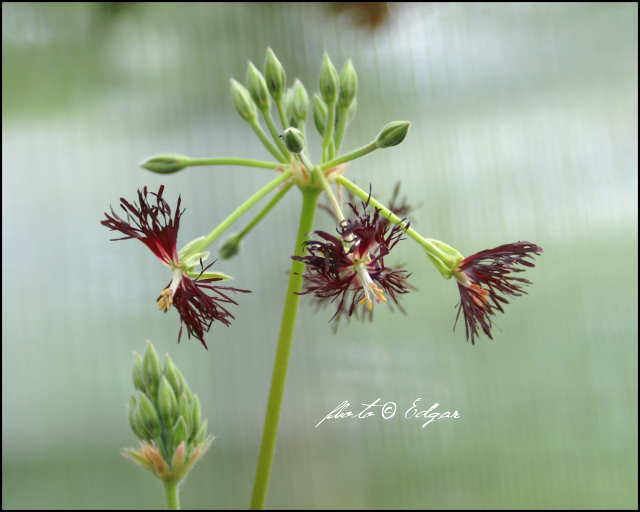
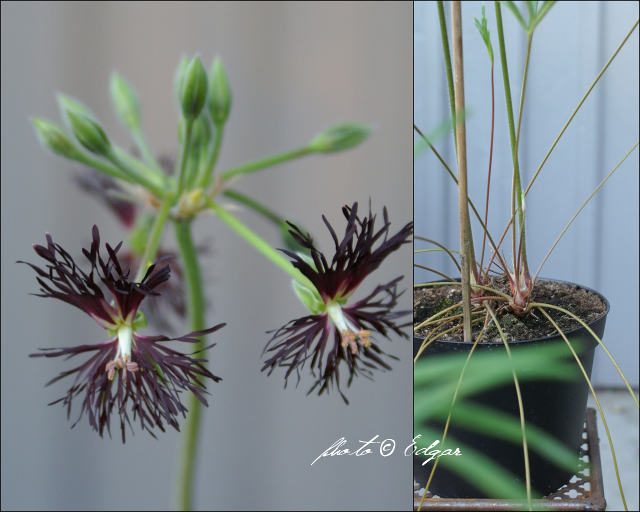
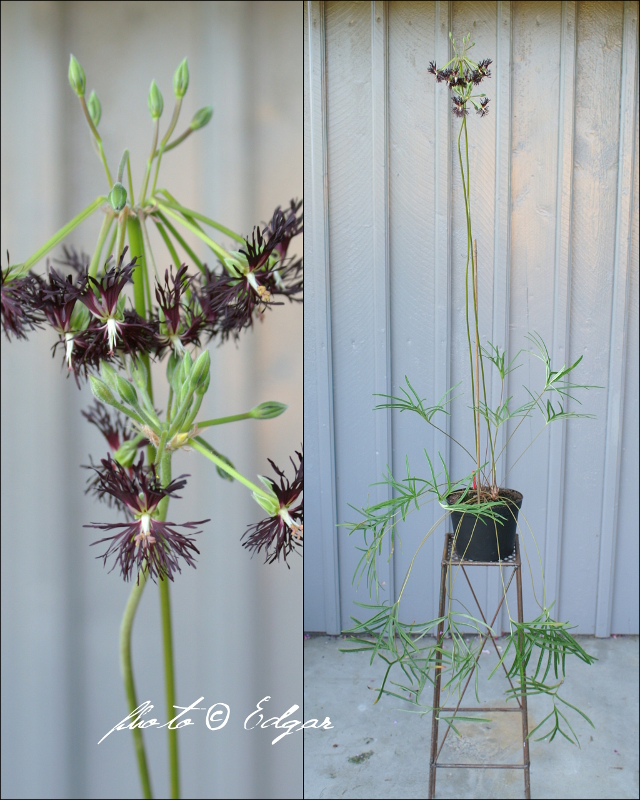
Section Reniformia
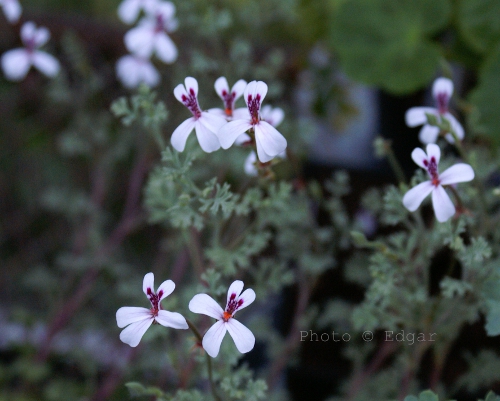
Scented grey-green leaves.

These are the two varieties I have grown.
